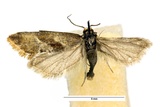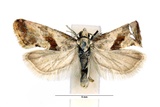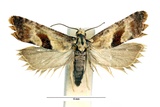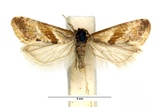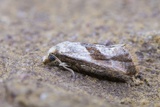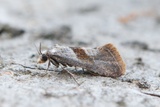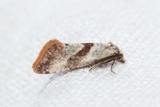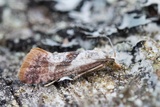Falseuncaria ruficiliana (Haworth, 1811) Species
Last modified: Nov. 15, 2023, 11:27 a.m.
A very rare and local species in the southern part of Belgium, not seen for a long time. Recent observations in NA in 2015 and 2020, afterwards very irregular.
Details
- Classification
- Family: Tortricidae > Subfamily: Tortricinae > Tribus: Cochylini > Genus: Falseuncaria > Species: Falseuncaria ruficiliana
- Vernacular names
- Primulabladroller (NL), Red-fringed Conch (EN)
- Synonyms
- Falseuncaria ciliella (Hübner, 1796), (Denis & Schiffermüller, 1775) and Falseuncaria rubellana sensu auct.
- First mention in Belgium
- De Fré Ch. 1858. Catalogue des Microlépidoptères de la Belgique. — Annales de la Société entomologique belge 2: 45–162. On page 96.
- Status
-
Native
Distribution
Imago
Wingspan 11–15 mm. With similarities to Cochylidia implicitana the moth is pale grey with a slight pink suffusion towards the termen. Wing markings are reddish brown and there is a scattering of scales of this colour across the wings. The central fascia is more regular and wider. The terminal shading is more significant. The cilia are ochre.
Caterpillar
Body yellowish white head brown to black.
Bionomics
The larvae bore in the seed capsules of the host plant consuming the seeds. Larvae may hibernate in a cocoon. They pupate in a cocoon on the ground.
The adults come to light.
Flight periods
The adults fly in two generations a year from mid-April till late May and again from late June towards early September.
Observed on
- Host plant (species):
- Solidago virgaurea, Primula veris, Linaria vulgaris and Aster linosyris
The larva feeds on herbaceous plants like Solidago virgaurea, Primula veris, Bellis perinnes, Aster linosyris, Rhinanthus minor and Pedicularis sylvatica. Perhaps also on Linaria vulgaris but this is questionable.
Habitat
Limestone grasslands where the food plants grow.
